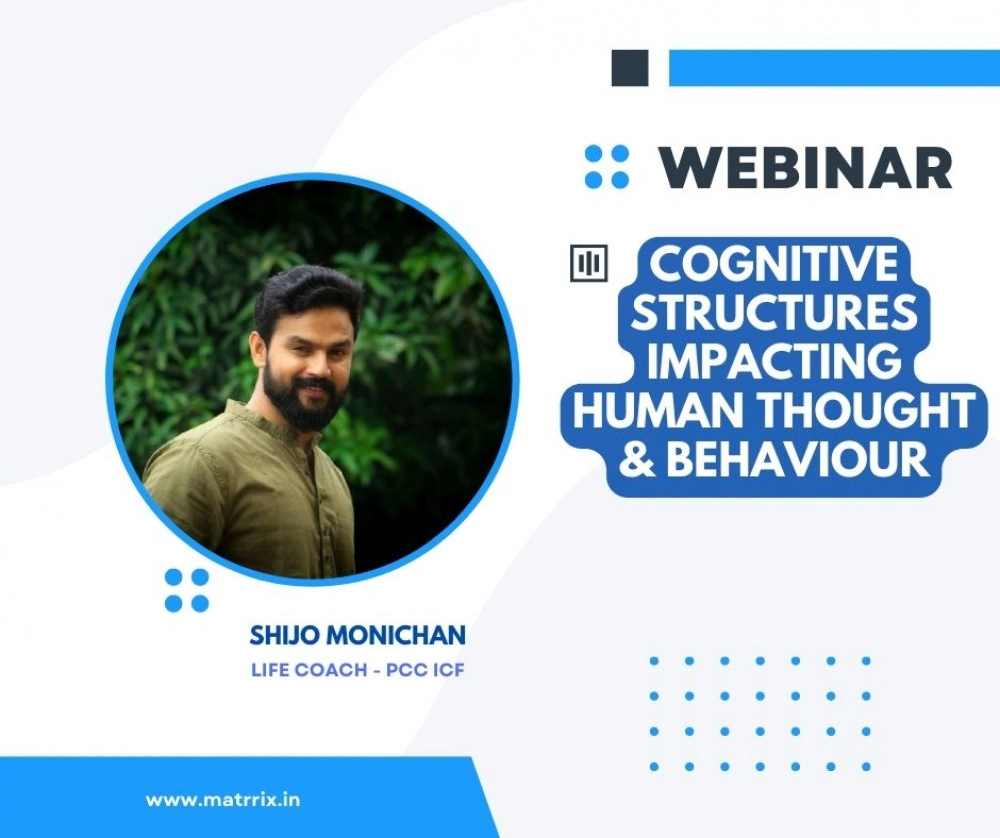INTRODUCTION
We all have our differences. And we encounter with people who are have different behavioural or thought patterns than ours. Imagine a newly wedded couple; they enter the marital contract, begin their marital life, and gradually come to know each other. They come to know about both the positive as well as negative characteristic features of their partner.
A good number of couples accept these differences, accept the other as he or she is and lead a satisfied life. But unfortunately, a considerable number of people are not able to tolerate the negatives of their partners. This lack of acceptance may eventually lead to shouts, fights, conflicts, trust issues etc. At the worst, it may even lead to a separation.
Take the example of a workplace. How is your reaction when you are challenged by people with differing opinions? Be it your colleague, or your manager or your staff or your teacher or your student…How’s your reaction when you come across their varied & differing viewpoints? To, those who are religious-minded, ‘How’s your response when you find people with different and contrasting belief systems and rituals?
How does this difference look like to you? Does it look like a problem? If so, what makes it problematic? Who is the real villain? The other, with many differences or yourself with a different perspective? Contrary to your thoughts and expectations, the real villain might be within yourself; Your thought patterns, your behavioural patterns, your attitude, your unconscious blocks…….and above all, the God Father of all these – Your Belief Systems, as formed by the social structures, might play the role of real Villain in your life. They are directly linked to our cognitive brain and to our knowledge. That’s why I call them as Social-Cognitive Structures.
Now, what is Belief? I don’t mean the ‘religious belief here.’ That’s just one element of the complex human belief system. There is no universal definition for belief. Because the perspectives differ. But, few of the characteristic features of Beliefs could be:
a. Beliefs are not necessarily factual, scientific or historical but they give subjective or objective meaning to the believers
Ex; Belief in God
b. They are derived from established and respected social institutions or persons.
Ex; Mahatma Gandhi’s idea about Non-Violence
c. Believes act as filters to the sensory input
Ex; The act of exchange of rings by couples, linked originally to the idea of love & commitment
d. Beliefs have regulatory, preservative and conservative roles in a society
Ex; Right to life (do not kill), Right to property (do not steal)
e. Beliefs create patterns in the psychology, neurology and sociology of the human
Ex; Some are extroverts or introverts, some are spiritual or secular, and some are active or lazy
Beliefs could be regarding anything or anyone, like, people, self, materials, qualities, relations, and so on. Let me just give some random examples of the beliefs people have;
| POSTIVE | NEGATIVE |
| Rulers need to be just | I am not good |
| Virtue lies in the middle | Others are better than me |
| I am good | I/he/she will never get better |
| Love is good | Everyone is selfish |
| Respect the elders | Everyone is against me |
IMPACTS OF BELIEF SYSTEMS ON THE HUMAN THOUGHTS AND BEHAVIOUR
Let us take an example. Suppose, the basic belief system which a person has is, “All are trustworthy”. The emotions which are attached to them are positive. They influence the thoughts leading to the formation of perspectives and attitudes. And the final behaviour is the act of trusting. When this process is successful, the belief system gets deepened.
On the contrary, during the process, when the individual encounters negative experiences like, being cheated by someone whom he/she trusted, this may lead to counter-beliefs, like, “No one can be trusted easily”. Thus the entire belief system gets altered. Thus I may say, “Human Psychology is Human Sociology and Vice Versa”.
ORIGIN OF HUMAN BELIEF
Here comes the curious discussion about the Origins of Belief.
An unborn baby can feel the emotions of the mother when it is in the womb. The chemicals, released in the body of the mother can have direct impact on the foetus. Similarly, a baby begins to hear sounds outside the womb when it is 27-30 weeks old. Now, imagine a situation when the parents are fighting or when the mother is emotionally harassed by the in-laws. The feeling of insecurity or helplessness, or even the anger is directly impacting the baby. These insecurities and anger may persist in the life of the child as the core belief systems and can impact his/her thought-behavioural. They may even affect his or her relationships very adversely in the form of trust issues, conflicts, emotional outbursts or even doubtful approaches.
From the above examples, it’s pretty clear that the origin of human belief system is twofold;
EXPERIENCE
Dr. Wendy Hill speaks about “High Impact Moments” as the ‘momentum’ of hard-core believes. In the above example, it could be the fight between the parents. In the first 10 years, the child remains defenceless and vulnerable. Here the belief systems are guided by emotions. But, after 10, the Child becomes defensive and begins to use the power of reasoning. Reason works but emotion remains dominant in moulding beliefs.
Now, when the child becomes an adult, he/she begins to assess, analyse, filter, judge and reflect over his/her experiences. Here, the beliefs are guided by reason, but coupled with emotions. The formation of strong perspectives, ideologies, worldviews, outlooks etc. happen at this level.
SOCIETAL INFLUENCE
The net result of the societal influence is “accepting what others tell as true”. There is an interesting question here, “Who are these others?” The answer could be;
- Family
- Elders
- Peer groups
- Culture
- Religion
- Society
- Educative authorities
These beliefs are not necessarily true or factual knowledge. But individuals seldom challenge them, because, they are derived from those social bodies or individuals who command authority and respect in the society. Besides, deep emotions are attached to these believes. They give identity and value to the individuals in a particular society or culture and they give subjective as well as objective meaning to the individual.
SOCIALISATION OF BELIEF SYSTEMS
When the belief - triggered behaviours are socially followed by a larger group over a long period of time, they form conventions, traditions, norms and other social structures. When individuals are born in such structures, they tend to form belief systems in accordance with them. For ex, the God concepts, religious rituals, moral ethos, values, self-images, etc. So, it’s a process of Belief begetting belief.
HOMEOSTATIC EFFECT OF BELIEFS ON HUMAN THOUGHT & BEHAVIOUR
The word Homeostasis derives its origin from two words – Homoios which means ‘similar’ and Stasis which means ‘stability’. Therefore means equilibrium or internal stability. When beliefs get ingrained over a long period of time and coupled with emotions, they tend to create a state of Homeostasis which means, beliefs become stable. This is essential in forming convictions and ideologies.
But there is also a danger hidden here. It’s the possibility of individuals becoming stubborn and adamant in their beliefs, in such a way that they begin to reject every other belief systems. They close their ears against every feedback. They may hold on to their ideologies as the only true ideology. Homeostatic effects create significant neural pathways in their brain which are so difficult to change, creating significant impacts on the thoughts, attitudes and behaviour of the individual.
Let’s have a look at few examples of homeostatic impact of beliefs on human thoughts and behaviours, both positive and negative;
Positive Impacts;
- Self Esteem, Self Confidence etc
- Trust
- Love of Family, Love of nation, Love of religion etc
- Spiritual, Peaceful, Jovial characters
- Optimist & Positive Outlook about the world
Negative Impacts
- Low-self Esteem, Low Self- Confidence
- Lack of trust, Conflicting relationships
- Anti- Social, Anti- National etc.
- Fundamentalist or Fanatic religiosity
- Pessimist & Negative Perspectives
- Stereotypes or Biases
- Highly Critical
DEALING WITH THE DIFFERENCES OR THE CONFLICTING BELIEF SYSTEMS
We encounter with such differences within ourselves, our family, our workplace, our institutions, our societies, our associations etc. Sometimes, these differences irritate or provoke us. They affect our personal or professional or social life. So, the question is, ‘How to deal with these differences.?’
Therefore, let me present the ADR approach before you.
A - ACKNOWLEDGE
This is twofold – a) Acknowledging the self as it is and b) Acknowledging the others as they are. Be what you are and just let others be what they are. No one can be judged for their differing belief systems or patterns. Because, differences in behaviours and thought patterns come from varied belief systems. And belief systems are formed through experience and societal influence. Therefore, What we require is a non-judgemental approach. Accepting others as they are in their uniqueness and respecting their difference. This is the method of Acknowledgment. The stubbornness that “everyone should adhere to my viewpoint” is only an intellectual Ego. When stubbornness and criticism drive people away, acknowledgement brings them closer. This is applicable in a family, institution, corporate, classrooms, coaching space etc. Diversity is accepted with due respect here.
D - DIALOGUE
When you realise that your belief systems, thought or behavioural patterns are causing chaos within yourself instead of harmony, it is better to get into a dialogue with yourself. Similarly, when we realise that the other’s belief systems or thought patterns are causing harm beyond certain limits, invite them for a healthy dialogue. Dialogue doesn’t mean a verbal spat. This is to be done with utmost humility. Remember, our ego can play the role of villain here. In the coaching terminology, we say, we need to be like a hollow bamboo – a state where we remain present without our ego. First, acknowledge the other’s feelings and emotions as they are, listen to them, their viewpoints, their perspectives, their differing opinions. Understand the cognitive reasons behind their behaviour. Thus we create a space for the person to reflect about their own belief systems which directly or indirectly influence them in order to bring required alterations.
R - REFRAMING
Reframing happens through the combination of learning and unlearning; Reframing the perspectives and belief systems. Reframing is also a sort of Rebirth
When we establish a healthy dialogue with the differing individuals, we can come up with certain open-ended questions, like;
- How do you look at your situation from a different angle?
- What could be the possibilities to bring solid changes to the current situation?
- What will happen if you change your attitude?
- How do you want to look like after a certain period of time?
These questions may help the differing individuals to get into deeper awareness of their ‘self’ and perceive their current situation from a different frame os reference.
IMPACTS OF THE ADR APPROACH
- Deeper look at and better understanding of differences
- Positive acceptance of Differences with humility
- Building and maintaining relationships through acknowledgment
- Greater Self Awareness
- Effective Leadership
- Better family building
- Reframing the distorted patterns through constructive feedback
CONCLUSION
Human psychology is human Sociology. And human Sociology is human psychology as well. When we work upon the human psychology, we impact the human Sociology as well. Influencing the belief systems is one of the most powerful psychological tools in order to bring concrete changes in the lives of an individual and his/her social relationships. The ADR approach could be used as one of the powerful techniques to deal with the differences, be it, ideological, social or professional.





